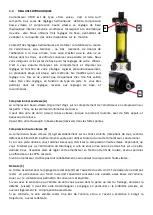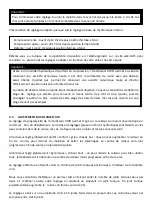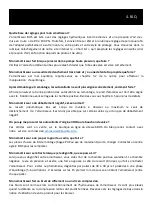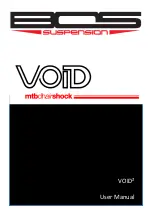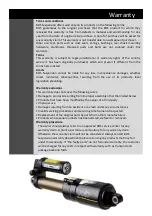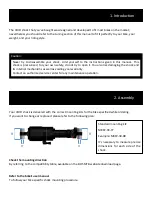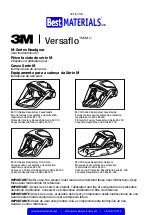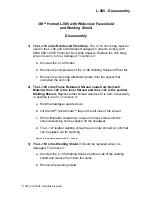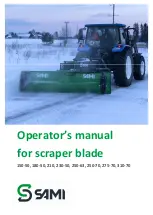
Base settings (regardless of internal shock setting):
Please refer to the shock chart list available to download at bosmtb.com for specific pressure and setting
suggestions for your bike and weight.
3.5
AJUSTING AIR VOLUME
The progressivity adjustment featured on the VOID, allows you to adjust the air spring rate on the last third
of stroke. Thus, if you have found satisfying settings (air pressure and hydraulic) on the first half of the
stroke, you can adjust the feel of the last millimeters of travel.
The most frequent and simplest cases are:
The shock has an overall setup to single out comfort and grip, and the bike sits low: by increasing the end-
stroke rate you will get a better control of the chassis through the shock and avoid bottoming out. The rate
curve should be more progressive (increasing at the end) by adding o-rings.
The overall setup of the shock is more responsive, with a high chassis balance. By decreasing the end
stroke rate by removing o-rings, you can make sure that you use all the travel.
This setting is adjusted by adding or removing O-rings placed inside the air can.
We suggest you to go about the set-up step by step. First add or remove two O-rings, then fine-tune the
setting with one O-ring at a time. Adding one O-ring in the chamber increases the end of stroke spring rate
by 2%.
Usually, the correct setting is between 0 and 4 O-rings. However, the range can go up to 10 O-rings
depending on the bike
Important :
To start your adjustment, turn the knob clockwise until it stops (clicks = 0). Then count the clicks
while turning the knob counterclockwise.
Low-speed compression: 12 clicks from fully closed position
High-speed compression: 17 clicks from fully closed position
Rebound: 12 clicks from the fully closed position
Important :
With a significant hydraulic compression support, the VOID shock allows the bike to maintain a high
dynamic balance, as well as giving good response, and improved handling. BOS recommends setting up
the bike with a fast rebound to keep the chassis balanced, and avoid the bike sitting low in its travel.
The feeling of «fast» or «slow» rebound will differ from one rider to another. Thus it’s difficult to
define it precisely. We advise you to define your own range of correct rebound - the range of settings
between «too fast» and «too slow». Then, always choose a setting in the faster part of that range, for
example the three last clicks (counterclockwise) on a range of nine.
Summary of Contents for VOID2
Page 1: ...VOID Notice D utilisation ...
Page 13: ...VOID User Manual l ...


